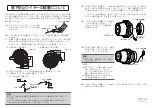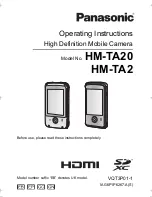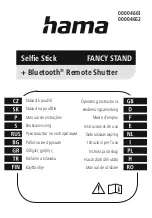
16
Adjusting brake force
1.
Lift the quick release lever to clear the adjustment screw. Using a
2.5mm or 3/32” hex
key, turn clockwise to increase the brake force.
2.
10 full turns = 2 kg (4.4 lb) of additional brake force.
3.
When the adjustment is made, test the brake force
again on the scales, repeat if necessary.
4.
Repeat the procedure for the remaining two legs.
!
CAUTION!
Do not adjust more than required as this
will lead to increased wear and stress on the brake
components.
Maintenance
2.5mm
Should the adjustment range become in-
sufficient to achieve the correct brake force,
please contact your local service centre.
www.vinten.com
Checking brake force
Periodically check the effectiveness of the leg brake force and adjust
if necessary.
1.
Extend the middle and lower sections to 20 cm each.
2.
Place a rubber mat or similar on a set of scales to prevent
damage and skidding. Stand one leg on a set of scales and apply
a vertical downward force.
3.
With an average downward force of
20 - 30 kg (44 - 66 lb) applied, the leg
should remain extended.
4.
If the leg starts to collapse before a
20 kg (44 lb) force is achieved then
adjustment is required.
“See Adjusting brake force”
.
!
WARNING!
Use a non-slip mat to ensure the
foot does not slip from the scales when applying
downward pressure.
WARNING!
Finger entrapment. Take care not to trap
fingers.
20 - 30 kg (44 - 66 lb)
< 20 kg (44 lb)
Average slip force
> 30 kg (66 lb)
20 cm (7.9 in)
20 cm (7.9 in)
18 19 20 21 22 23 24 25 26 27
kg



































